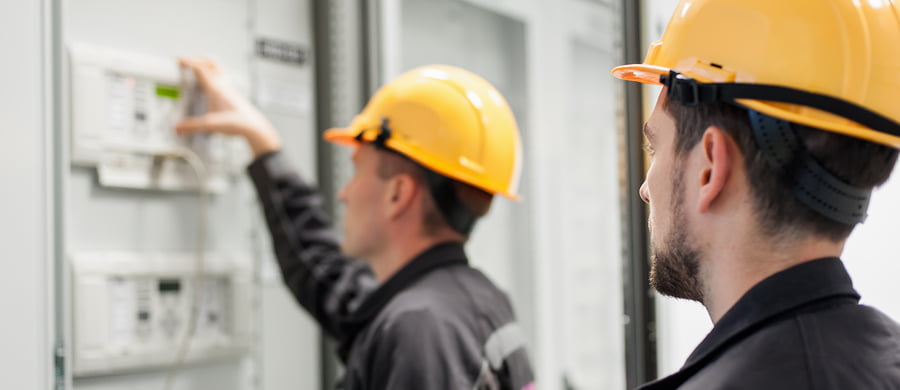Practical Applications for Air to Air Heat Exchangers
The closed loop cooling cycle of an Air to Air Heat Exchanger makes it right for many applications where cooling solutions such as fans are unsuitable or when air conditioners are undesirable due to their larger size, higher noise levels and greater energy consumption.
Key Attributes of Air to Air Heat Exchangers
In order to assess the suitability of using an Air to Air Heat Exchanger, it’s necessary to understand how it works and the attributes that make it attractive. Conversely, one also needs to appreciate when an Air to Air Heat Exchanger is not the right choice.
- The right ambient conditions: Air to Air Heat Exchangers work by using an internal heat pipe to remove heat from an enclosure and discharge this heat to the ambient air. Although it’s an efficient process that’s capable of removing a significant amount of heat, the one limitation is that the ambient air temperature should always be lower than the enclosure temperature so that there’s a positive temperature differential to drive the cooling process.
- Closed loop cooling: Since heat transfer is through the heat pipe, there is no physical exchange of air between the enclosure and the outside air. This means the interior of the enclosure can be sealed to prevent the ingress of dirt, dust, corrosive chemicals and water. Because of this, Air to Air Heat Exchangers can be employed with enclosures that are suitable for use in harsh environments.
- Compact size: Their compact dimensions mean they are ideal for installation in cramped locations where there’s not a great deal of space. For example, the Compact Series of Air to Air Heat Exchangers need only 3.5 inches clearance on the side of an enclosure; virtually no other closed loop cooling solution takes up as little space
- Energy efficient: The heat pipe, which is the heart of an Air to Air Heat Exchanger, requires no external energy; instead it uses the heat inside the enclosure to boil a liquid refrigerant and the cooler, outside air to condense the vapor, resulting in a transfer of heat. The only external power used is to drive two air circulation fans to improve the rate of heat transfer. Total power consumption is less than 50 watts.
There are numerous practical applications where these characteristics make the Air to Air Heat Exchanger the first choice for enclosure cooling
Cooling Production Line Control Cabinets
When electrical control gear gets too hot, equipment malfunctions and fails. Also, most automated production lines use PLC control systems, and if these systems overheat, system memory may be corrupted and data communication between control systems interrupted, causing plant downtime.
The compact size of Air to Air Heat Exchangers makes them the ideal choice for cooling electrical control cabinets placed close to the lines where conventional air conditioning solutions would be too bulky.
Food Manufacturing Plants
The hygiene requirements in food manufacturing plants have a major impact on the type of electrical equipment allowed in food preparation and storage areas. Equipment must be manufactured so that it can be easily cleaned, and because corrosive cleaning agents are often used, it must be corrosion-resistant. Commonly, these requirements mean that equipment must withstand being washed with high-pressure cleaners. Consequently, electrical control systems are sealed and need closed loop cooling systems. Air to Air Heat Exchangers are a great option especially as they can be supplied with NEMA 4X stainless steel enclosures rated to withstand corrosion and prevent water ingress.
Low Noise Applications
Hospitals, hotels, apartments, control centers and communication rooms are all examples where noise needs to be kept to a minimum. In these and other similar locations, an Air to Air Heat Exchanger is a great solution for cooling electrical enclosures containing control and communication equipment because its operation is much quieter.
Remote Locations
An Air to Air Heat Exchanger is an excellent choice for cooling enclosures used by off-the-grid applications or those that require backup power supply systems in case mains power goes down. Their miniscule power requirements mean they will not draw much power from standby batteries and their maximum power requirements are easily met using solar panels. Typical examples would include telecom enclosures, remote monitoring stations and communication facilities.
Evaluating Practical Air To Air Heat Exchanger Applications
Air to Air Heat Exchangers are a good solution for applications that need closed loop cooling but do not require the cooling capacity of an air conditioner. They are compact, low cost and energy efficient, and their design is such that they can withstand the rigors of harsh outdoor locations when fitted with the appropriate NEMA enclosure type. To discover if an Air to Air Heat Exchanger is suitable for your application, contact our local sales representative or our support team at our factory in Texas.


